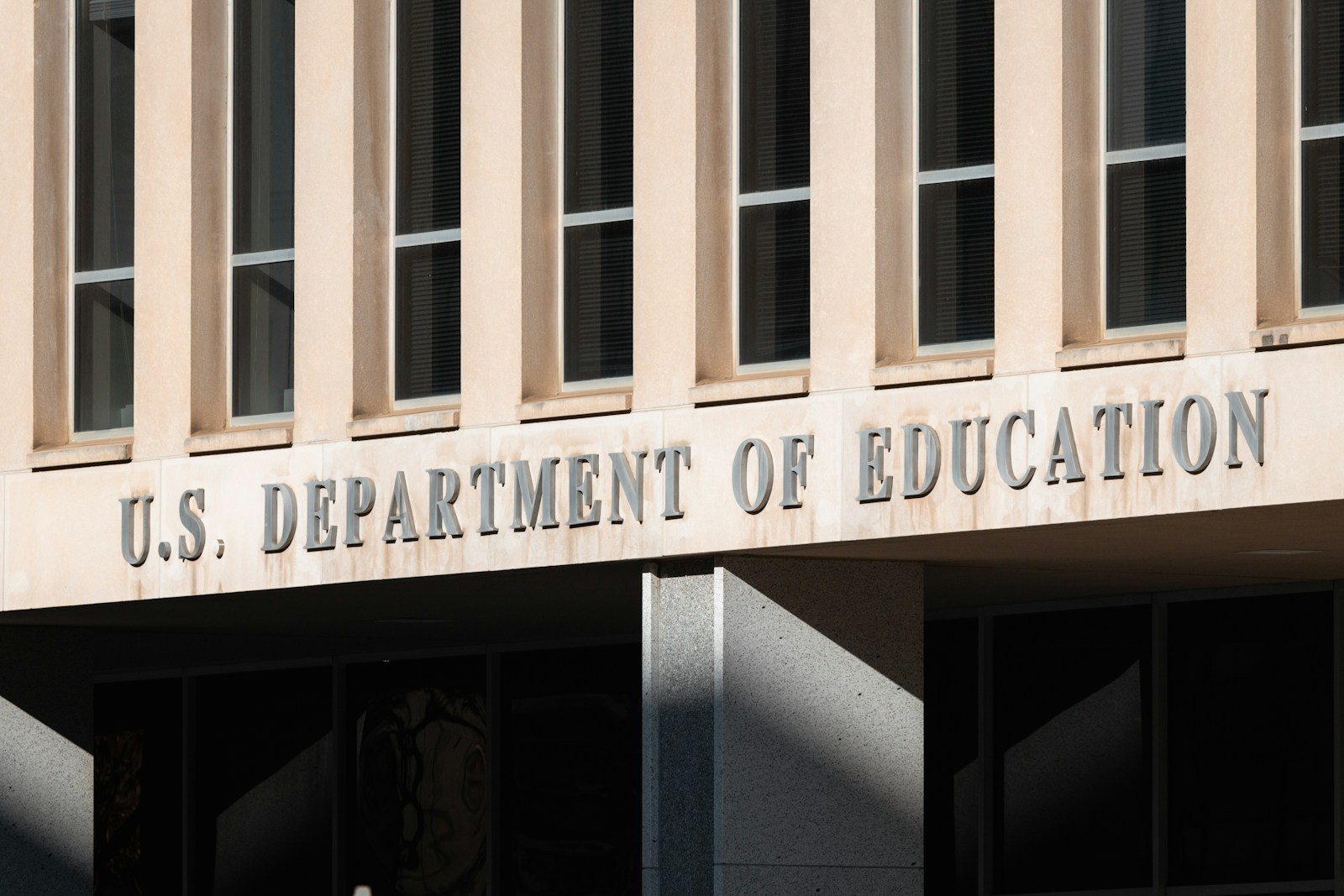
President Donald Trump’s directive on August 7, 2025, ordering the Education Department to collect detailed data on college applicants, marks a significant escalation in his administration’s ongoing scrutiny of university admissions processes. This presidential action mandates the collection of information on applicants’ race, gender, test scores, and grade point averages, with the explicit aim of scrutinizing whether universities are giving minorities preference in admissions. The move comes as part of a broader effort by the administration to align the higher education system with what President Trump views as his political agenda, intensifying a national debate that has simmered since a landmark Supreme Court decision two years prior.
The impetus for this directive lies squarely in the 2023 Supreme Court ruling, which largely barred the consideration of race in college admissions. This pivotal decision found that “racial preferencing in college and university admissions is illegal under Title VI of the Civil Rights Act of 1964 (Title VI) and the Equal Protection Clause of the Fourteenth Amendment.” The ruling specifically struck down the use of affirmative action programs at both the University of North Carolina and Harvard, a victory celebrated by conservative activists who had argued that such policies led to discrimination against white and Asian students.
For the Trump administration, admissions data has become an increasing focus in its campaign to shift the ideological balance of academia, an arena the president has openly characterized as hostile to conservatives. The administration’s actions are driven by a stated commitment to transparency and the belief that institutions should be held accountable for their admissions practices. Secretary of Education Linda McMahon articulated this position, stating, “It should not take years of legal proceedings, and millions of dollars in litigation fees, to elicit data from taxpayer-funded institutions that identifies whether they are discriminating against hard-working American applicants.”

To comply with this presidential action, the Education Department has outlined specific reporting requirements for institutions of higher education. Colleges will now be mandated to submit data disaggregated by race and sex, covering their applicant pool, admitted cohort, and enrolled cohort, for both undergraduate levels and specific graduate and professional programs. This comprehensive data collection will include quantitative measures of applicants’ and admitted students’ academic achievements, such as standardized test scores and grade point averages, among other applicant characteristics.
The directive also tasks Secretary McMahon with increasing the number of accuracy checks on the data provided by schools, and taking action against universities deemed to have submitted untimely or inaccurate information. The National Center for Education Statistics (NCES), which oversees the Integrated Postsecondary Education Data System (IPEDS), will be central to this effort. IPEDS, which already collects admissions, enrollment, and financial information from institutions participating in federal financial assistance programs, will be updated to accommodate these new reporting demands. Institutions receiving funding through Title IV of the Higher Education Act of 1965 must complete all IPEDS surveys as a condition of participating in federal student aid programs.
Proponents of the new requirements, particularly conservative activists, have enthusiastically welcomed the move, framing it as a crucial step toward accountability. Edward Blum, the head of Students for Fair Admissions (SFFA), the group that successfully sued Harvard in the affirmative action case decided by the Supreme Court, lauded the action as a “landmark step” toward greater transparency for students, parents, and taxpayers. Mr. Blum asserted, “For too long, American colleges and universities have hidden behind opaque admissions practices that often rely on racial preferences to shape their incoming classes.”
Mr. Blum also indicated that President Trump’s action could empower the Education Department to seek additional information necessary to verify compliance with the affirmative action ruling. He suggested that the department might compel universities to disclose whether other data, such as an applicant’s neighborhood, family income, or first-generation status, is being used as a “stand-in for race.” While acknowledging that “colleges and universities have a legal right to use a holistic admissions process,” Mr. Blum emphasized that this process must not “involve the use of racial proxies.” This further broadens the scope of potential governmental scrutiny into institutional practices.

Secretary McMahon underscored the administration’s broader vision for higher education, stating that the new requirements “will ensure that meritocracy and excellence once again characterize higher education.” She further added, “We will not allow institutions to blight the dreams of students by presuming that their skin color matters more than their hard work and accomplishments.” This stance aligns with the administration’s broader “crusade against diversity, equity and inclusion in higher education,” which has included an executive order in the president’s first week directing all departments and agencies to terminate “discriminatory and illegal preferences, mandates, policies, programs.”
However, the directive has drawn sharp criticism and raised significant concerns among legal experts and higher education advocates across the nation. Justin Driver, a Yale Law School professor, characterized the changes as “another catastrophic blow in the Trump administration’s ongoing assault on American higher education.” Mr. Driver contended that the order “signals the Trump administration’s efforts to depress Black and brown enrollment, and intimidate universities into decreasing Black and brown enrollment,” suggesting a more insidious intent behind the data collection.
Professor Driver further argued that the Trump administration is operating from a “profound misapprehension” regarding the Supreme Court opinion. He clarified that while using race as its “own qualifier” is expressly forbidden, universities can still have programs designed to encourage local high school students to apply, even if such initiatives indirectly lead to an increase in Black student enrollment. He emphasized that “they think the goal of racial diversity itself is verboten, and that’s not what the decision actually says.” He also suggested that if the administration were truly concerned about merit-based admissions, it would also take steps to collect data on legacy enrollment and the children of donors.

Other critics, like Aaron Ament, a former Education Department official and president of the National Student Legal Defense Network, questioned the government’s priorities. Mr. Ament suggested that the government could do more to level the playing field for applicants by demanding better insights into college costs, asserting, “There is a real need for reporting and transparency on what actual prices are.” He concluded that the new data demand is “a tactic to try to stop institutions from helping disadvantaged students,” diverting attention from more substantive issues of access and affordability.
The practicality of implementing such a broad data collection effort has also been challenged, particularly concerning the government’s capacity to manage and analyze the influx of information. Paul Schroeder, executive director of the Council of Professional Associations on Federal Statistics, raised concerns given that the National Center for Education Statistics (NCES) was “reduced to just a handful of employees” after mass layoffs in March, which also affected staffers overseeing contracts with outside vendors. Mr. Schroeder questioned, “Without NCES, who’s going to actually look at this data? Who’s going to understand this data? Are we going to have uniform reporting or is it going to be just a mess coming in from all these different colleges?” He warned, “It’s not just as easy as collecting data. It’s a lot of work. It’s a lot of hours. It’s not going to be fast.”
Critics also point to the inherent vagueness of the directive, noting that it “does not define ‘racial proxies’” nor does it “outline what data would prove an institution is or is not considering race in its admissions process.” Angel B. Pérez, CEO of the National Association for College Admission Counseling, openly stated that the order, which claims colleges use “overt and hidden racial proxies,” aims to intimidate colleges into recruiting fewer students of color. Mr. Pérez starkly put it, “What the Trump administration is really saying is that you will be punished if you do not admit enough white students to your institution.” He further elaborated, “It seems to me like this administration wants to punish any institution that does not admit a majority of white students to their campus,” suggesting a deeper agenda behind the seemingly neutral data collection.

Richard Kahlenberg, an advocate for class-based affirmative action who served as a witness for Students for Fair Admissions, cautioned that the directive would be “incomplete” without also requesting information about students’ socioeconomic status. He explained that without such data, it could erroneously appear that Black and Hispanic students were admitted with lower test scores in defiance of the Supreme Court decision, when a college might have used family income as a legitimate factor. Research indicates that test scores correlate closely with family income, and Black and Hispanic students are more likely than white and Asian students to come from lower-income households. Mr. Kahlenberg stated, “I think transparency in admissions is a good thing,” but added that “by failing to request the socioeconomic data, it looks like the administration is going to take us down this very extreme path where a university that achieves racial diversity is suspect, even if it uses a race-neutral means like socioeconomic status.”
The American Council on Education’s president, Ted Mitchell, suggested that the data collection itself might be a “fishing expedition,” noting that students are not required to provide racial information, which could complicate efforts to prove compliance with the Supreme Court ruling. Jonathan Feingold, a legal scholar at Boston University, expressed concern that the administration “has exaggerated that decision as part of a broader campaign to end diversity, equity and inclusion, or DEI, programs on school campuses.” He warned, “There is an effort to rhetorically overstate the holding, so that institutions are overcomplying.” This suggests a strategic use of rhetoric to influence university behavior beyond the letter of the law.
The directive builds upon previous agreements forged between the Trump administration and institutions like Brown and Columbia universities. In their negotiations to reinstate federal funding, these universities had already agreed to provide access to standardized test scores, grade point averages, and information about their applicants’ race. Harvard’s compliance with the Supreme Court decision is also a “major focus of White House negotiations” for the release of billions of dollars in halted research funding, indicating a pattern of leveraging federal funding to influence institutional policies.
While the directive taps into the Education Department’s “wide latitude” to control data collection under federal law, allowing schools, as a condition of joining student aid programs, to agree to supply information, it could still “invite legal challenges, perhaps on the basis of the federal student privacy law.” Such challenges might “slow or stall the president’s instructions.” Moreover, universities and the government could inevitably “tussle, of course, over any consequences that come from conclusions that U.S. officials draw from submitted data,” foreshadowing potential future disputes over interpretation and enforcement.

President Trump’s directive to demand extensive admissions data from universities marks a pivotal moment in the ongoing national conversation about race, merit, and access in higher education. The administration portrays the move as a crucial step towards transparency and upholding a merit-based system, intending to ensure that “meritocracy and excellence once again characterize American higher education.” Simultaneously, critics view it as a calculated attempt to discourage diversity and undermine institutional autonomy under the guise of compliance, warning of a “chilling effect” on efforts to foster diverse student bodies. As universities prepare to navigate these new requirements for the 2025-26 academic year, the profound implications for admissions practices, legal challenges, and the very fabric of American higher education will undoubtedly continue to unfold, shaping the landscape for generations of students to come in an increasingly complex and scrutinized environment.



